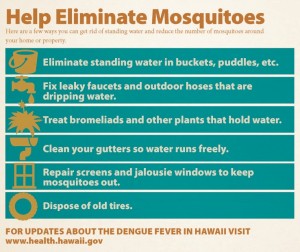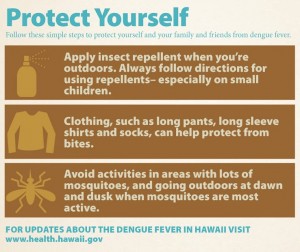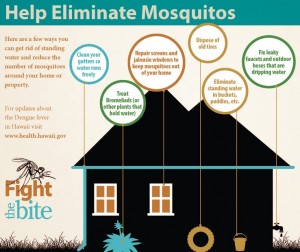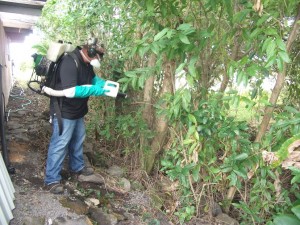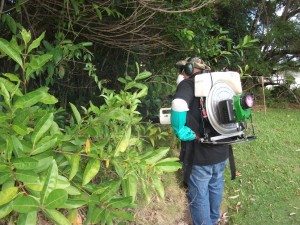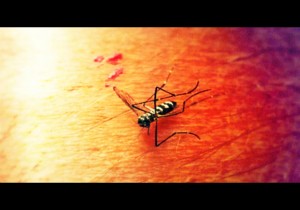Dengue Fever Count Now Totals 145
The dengue fever count for confirmed cases in Hawaiʻi now stands at 145, with today’s update from the state Department of Health. The total count includes 128 residents of the Big Island of Hawaiʻi and 17 visitors. Of the confirmed cases, 113 have been adults and 32 have been children under the age of 18.
The onset of the illness has ranged between Sept. 11, 2015, and Dec. 3, 2015, according to new information compiled by the state Department of Health.
State health officials note that as of today, a total of 514 reported potential cases have been excluded based on test results and/or not meeting case criteria.
Our partners at BigIslandNow.com say that while confirmed cases have held at 145 since yesterday, the number of cases excluded from the count rose by 37 in the past 24 hours.
The state also released a map showing potential areas of infection. According to the map, which was updated on Dec. 9, the highest risk area is in Captain Cook. Areas identified as moderate risk include Pāhoa, Kailua-Kona, and Naʻalehu. Several areas were identified as posing some risk including: Volcano, Waimea, Waikoloa Village, Hāwī, Laupāhoehoe, Kawaihae, Kalaoa, Miloliʻi, Ocean View and Hilo.
Meantime, the Hawaiʻi Tourism Authority is monitoring the confirmed cases of dengue fever on Hawaiʻi Island and is working with the state Department of Health and marketing contractors to keep visitors to informed of the situation.
DOH has information on its website with tips on how to protect yourself, including fact sheets, FAQs, letter to visitors and residents, and other information.
As a precaution, the HTA recommends that visitors familiarize themselves with information on the DOH website prior to arriving and encourages stakeholders on Hawaii Island to share the information with their visitors and guests.
Earlier this week, the Hawaiʻi State Department of Health and the County of Hawaiʻi announced donations valued at more than $23,000 in mosquito repellant products from Longs Drugs, part of CVS Health, and Foodland Super Market, Ltd. to aid in efforts to fight the spread of dengue fever on Hawaiʻi Island.
The donations included more than 220 cases of repellent containing 2,400 cans of spray from Longs Drugs, and 20 cases of 4,800 individually wrapped towelettes from Foodland. Health officials say the repellent was distributed to at-risk populations on Hawaiʻi Island.
On Friday, the state Department of Health will host a visit to the State Laboratories Division and provide two demonstrations of the dengue fever testing processes.

Mosquito repellent. Image credit: State Department of Health. To prevent the spread of dengue fever, DOH recommends applying mosquito repellent containing DEET, wearing long-sleeved shirts and pants when in areas with heavy mosquito activity, using indoor insecticides, and clearing areas with standing water.

Mosquito repellent. Image credit: State Department of Health. To prevent the spread of dengue fever, DOH recommends applying mosquito repellent containing DEET, wearing long-sleeved shirts and pants when in areas with heavy mosquito activity, using indoor insecticides, and clearing areas with standing water.

Potential areas of infection by mosquitoes for confirmed dengue fever cases. Dec. 10, 2015 map. Image Credit: DOH. *Risk levels of areas where confirmed cases may have contracted dengue fever are determined by factors including the number of confirmed cases who reported visiting those areas, as well as observed mosquito activity. Individuals should always protect themselves against mosquitoes and mosquito bites island-wide; extra precaution should be taken in areas of risk.





